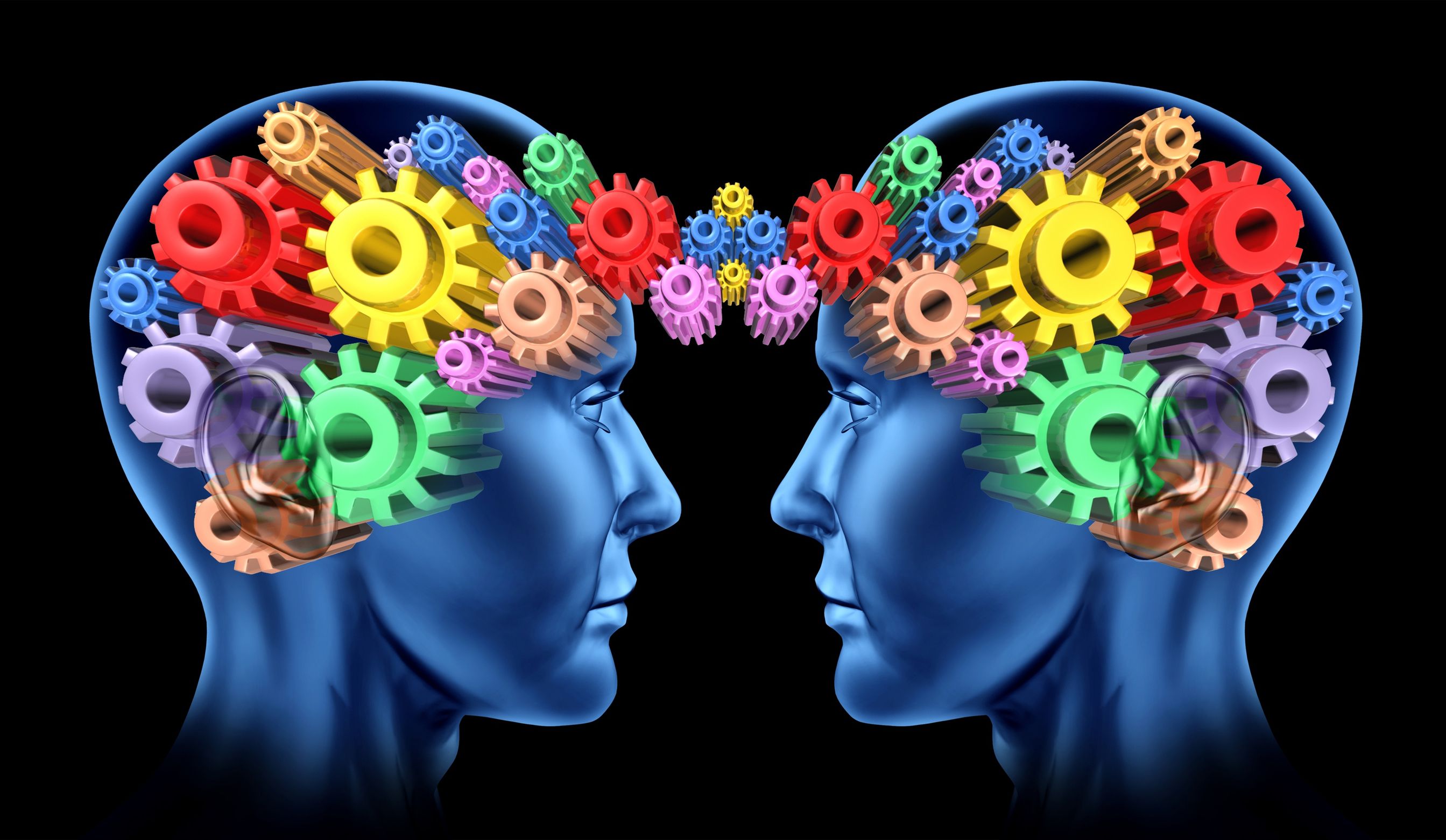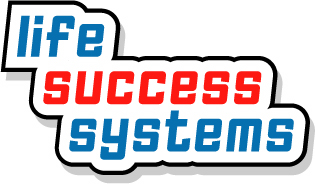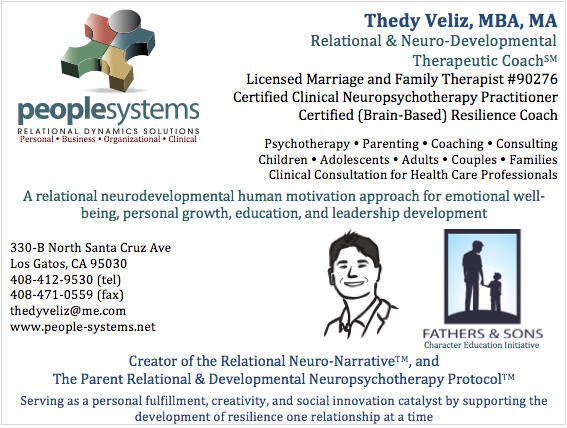My Journey Into the Field of Neuropsychotherapy
The Visionary Life
My journey into the field of neuropsychotherapy started in May 2002 when I attended a workshop at the Esalen Institute that was supposed to help me become a better businessman. To my surprise (and to some extent annoyance), The Visionary Life ended up providing a weekend experience dedicated to highlighting the importance of relationships for living a fulfilled life. At the time I was working in the field of corporate finance at a major technology company in Silicon Valley. The weekend seminar shook me to the core. Research study videos of the effect of early bonding on rhesus monkeys (Harlow, 1958) were particularly impactful to the eventual development of my People Systems Relational & Neuro-Developmental Approach to Human Dynamics. Robert Mauer, a clinical psychologist at UCLA, presented studies that introduced me to attachment theory (Bowlby, 1969; Bowlby, 1973; Bowlby, 1980; Bowlby, 1988; Ainsworth et al,. 1978). Six months later, I had quit my job and taken the first in a series of sabbaticals and educational experiences which led me to eventually become a licensed marriage and family therapist.
After this weekend in 2002, I started to read all the research studies and become acquainted with all the theories that I could find on child development, neuroscience, and relationships; and soon I was attending the yearly attachment (now Interpersonal Neurobiology) conference at UCLA.

The interpersonal neurobiology movement: The decade of the brain
In the 1990s, two visionaries from UCLA had set out to integrate the interdisciplinary work of researchers that had been working within their respective fields of knowledge towards the understanding of human development in the context of relationships and neuroscience. This was a critical and bold move as researchers have traditionally stayed within the comfort of their respective academic silos. Over the last fifty years, attachment theorists, researchers, and clinicians had accumulated an impressive body of research supporting the clinical and early research findings of pioneering relational theorists such as John Bowlby (Bowlby, 1969; Bowlby, 1973; Bowlby, 1980; Bowlby, 1988), Donald Winnicott (Winnicott, 1960; Winnicott, 1965; Winnicott, 1971, Winnicott, 1986), and Rene Spitz (Spitz, 1965). As brain imaging technologies became more accessible to academic research, the next step was to bridge attachment theory findings with fields of study related to neuroscience. With the publication of Affect Disregulation and the Origins of the Self in 1994 by Allan Schore (Schore, 1994) and The Developing Mind: How relationships and the brain interact to shape who we are in 1999 by Daniel Siegel (Siegel, 1999), the field of Interpersonal Neurobiology was born resulting in a revolution in our understanding of human development, and the critical role that relationships have in our ability to live healthy and productive lives.
My interest in personal development
While I had been interested in what made people successful since I read The Amazing Results of Positive Thinking by Dale Carnegie when I was fifteen, and had spent a significant amount of my disposable income and time attending trainings and seminars while reading books on personal and leadership development since I started college, my exposure to that Esalen Institute's weekend seminar in 2002 made me realize that there was a critical component of human development that was not very well understood by our cultural zeitgeist. I walked away from that weekend convinced that all the outcomes that people want – success, happiness, freedom, peace, health – have the same ‘source.’ And… if that 'source,' is not addressed, it does not matter how many self-help and leadership development books we read or seminars we attend, this 'source' will most likely find a way to ‘show it’s ugly head’ when we least expect it - as one of my clients once put it.
Personally, I feared that I might have ‘gotten it all wrong.’ It was this fear that propelled me to become intimately familiar with the work that Allan Schore, Daniel Siegel and their collaborators were involved in.


My first step towards addressing this newly discovered fear was to complete the coursework to become a life coach through the Coaches Training Institute in 2004. However, as I started to work with my coaching clients through Life Success Systems, I realized that the challenges that they were bringing up at the core were about what I eventually started to refer to as ‘primitive narratives’ that had been cemented in place during childhood due to the limitations of a young brain to use logic and reflection to objectively make sense of experiences. Yes, as life coaches we were trained to not focus on the past, but after my weekend at Esalen in 2002, I knew this was not in the best interest of the client. I knew that in order to really address the 'source,' and truly help the client, I would need to become a psychotherapist. Thus, I decided that I would continue my training by enrolling in the counseling psychology masters program at Santa Clara University (SCU).
My education and training at SCU was nurtured by two professors (Teri Quatman and Michael Axelman) who taught and practiced through the object relations (Quatman, 2015; Greenberg & Mitchell, 1983; Winnicott, 1960; Winnicott, 1965; Winnicott, 1971, Winnicott, 1986) theoretical and clinical lens. Through the years I have attended presentations by Dan Siegel, Dan Hughes, Pat Ogden, Ed Tronic, Stephen Porges, Peter Levine, Bruce Perry, Stan Tatkin, Peter Fonagy, Bessel van der Kolk, Allan Schore, and many others. I had purchased their DVDs and transcribed the content of their talks, read their articles and books, and communicated with many of them.
As I started to work with therapy clients, I knew that my clinical interventions were utilizing relational and neurobiological concepts, but I wanted to learn more. I did not want to find myself presenting technical information that might not be useful to my clients, as I wanted to be a clinician rather than a lecturer to them. Instead, I wanted my interventions to operationalize the research knowledge that I was obtaining.
From adults to children and back to adults
I took psychology of relationships as part of the core courses required to complete my masters in counseling psychology. Teri Quatman introduced me to what I consider to be the mother of attachment theory – object relations theory. Compared to attachment theory, this stuff was deep. It allowed me to feel pain that I had never felt as a child. To my surprise, this experience gave me a sense of freedom that I had never experienced. Again, I was having an encounter with developmental psychology and the experiential nature of the SCU counseling psychology program was rattling the 'source' as mentioned above. Most counseling psychology programs have moved away from developmental approaches. Instead they have adopted the medical model and teach students mostly cognitive behavioral therapy. It just so happens that SCU still teaches the traditional therapeutic theoretical orientations, yet I was not aware of this when I was trying to choose a program.
As I mentioned elsewhere, even though I wanted to work with adults, I got ‘sucked into’ the world of child development. When it was time to find a placement for my clinical practicum, Dr. Quatman recommended a clinical supervisor who had experience working with children from an attachment theory and object relations perspective. Once at Almaden Valley Counseling Service (AVCS), when I was asked what type of population I wanted to work with, I told the executive director that I would trust her judgment based on her assessment of my qualifications and interests. I ended up splitting my time between an elementary school and a high school. I found myself gravitating very early on towards inviting parents to participate in the treatment. At the high school, I would meet with the students during school hours, and then come back after school and meet with the parents. I started to realize that (as I initially wanted) I was working with adults, and it became evident to me that many of these adults would not have invested the time in their own therapy, but would do whatever it took to participate in their child’s treatment. This energized me because I felt that I had discovered the way to engage with the population that I had intended to initially work with, yet there was the added bonus of making a difference in children’s lives.
It very quickly became obvious to me that parents and not the children were the ones that needed the support – which is what family systems theories point to. I also noticed that many children did not understand why they were in therapy, and even if they did, felt burdened by the feeling that there was something wrong with them – a feeling that I did not feel was conducive to their healing.
Polly Matsuaka, my clinical supervisor at AVCS let me borrow some videos that she had purchased after attending a training with Daniel Hughes. Hughes is an international authority in working with adopted and foster children, and he heavily focuses on working with parents. His personality and style were an instant match, and very early into my clinical practicum I started to defer to working with the parents as much as possible. It was back in 2011 that I started to slowly develop what eventually has become the Parent Relational & Developmental Neuropsychotherapy Protocol™.
References
- Ainsworth, M. S., Blehar, M. C., Waters, E., & Wall, S. (1978). Patterns of attachment: A psychological study of the strange situation. Oxford, England: Lawrence Erlbaum.
- Bowlby, J. (1969). Attachment and loss. Vol. 1: Attachment. New York: Basic Books.
- Bowlby, J. (1973). Attachment and loss. Vol. 2: Separation. New York: Basic Books.
- Bowlby, J. (1980). Attachment and loss. Vol. 3: Loss, sadness, and depression. New York, NY, US: Basic Books.
- Bowlby, J. (1988). A secure base: Parent-child attachment and healthy human development. New York, NY, US: Basic Books.
- Greenberg, A., & Mitchell, S. (1983). Object relations in psychoanalytic theory. Harvard University Press.
- Harlow, H. F. (1958). The nature of love. American psychologist, 13(12), 673.
- Quatman, T. (2015). Essential psychodynamic psychotherapy: an acquired art. Routledge.
- Schore, A. N. (1994). Affect Regulation and the Origin of the Self: The Neurobiology of Emotional Development. Hillsdale, NJ: Laurence Earbaum Associates.
- Siegel, D. J. (1999). The developing mind: How relationships and the brain interact to shape who we are. New York, NY: Guilford Press.
- Spitz, R. A. (1965). The first year of life: A psychoanalytic study of normal and deviant development of object relations. International Universities Press.
- Winnicott, D. W. (1960). The theory of the parent-infant relationship. The International journal of psycho-analysis, 41, 585.
- Winnicott, D. W. (1965). The maturational process and the facilitating environment. International University Press.
- Winnicott, D. W. (1971). Playing and reality. Psychology Press.
- Winnicott, D. W. (1986). Home is where we start from: essays by a psychoanalyst, DW Winnicott. Penguin Books.
